Accidentally made your chili too spicy? The fastest solution: add dairy. Stir in 1/4 cup of whole milk, sour cream, or full-fat coconut milk per serving to immediately reduce heat while preserving flavor. This practical fix works because casein in dairy binds to capsaicin (the compound causing heat) and washes it away from pain receptors.
As a home cook with 15 years of chili-making experience, I've rescued countless over-spiced batches using these proven techniques. Whether you've added too much cayenne, mistakenly used ghost peppers, or just want to accommodate spice-sensitive guests, these methods deliver immediate results without compromising your chili's authentic taste.
Top 3 Immediate Fixes for Overly Spicy Chili
When your tongue is burning and dinner is ruined, these three solutions work fastest:
- Dairy intervention: Stir in 1/4 cup whole milk or sour cream per serving (most effective for immediate relief)
- Dilution method: Add equal parts mild chili or additional beans/meat to spread out the heat
- Sugar balancing: Mix in 1-2 teaspoons sugar or honey per quart to counteract perceived heat

Complete Guide to Fixing Over-Spiced Chili
While the immediate fixes above solve urgent problems, understanding why these methods work helps you choose the right solution for your specific situation. Capsaicin, the compound responsible for chili heat, binds to pain receptors in your mouth. Effective mitigation requires either diluting concentration, altering chemical bonds, or creating physical barriers between capsaicin and receptors.
10 Proven Methods to Reduce Chili Heat
Add Dairy for Instant Relief
Dairy contains casein that binds to capsaicin and washes it away. Whole milk works better than skim due to additional fat-based capsaicin absorption. For best results:
- Add sour cream directly to each serving bowl
- Stir in 1/4 cup whole milk per quart of chili
- Top with shredded cheese that melts into the dish
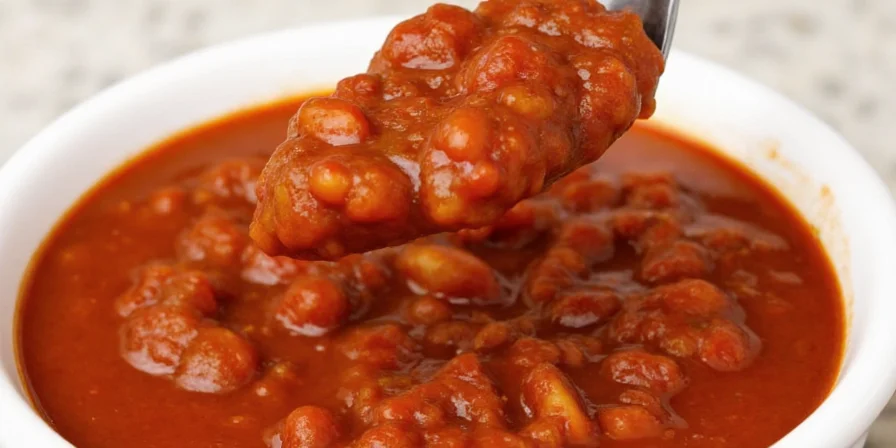
Balanced Sweetness Solution
Sugar counteracts perceived heat without altering actual capsaicin levels. The neurological distraction creates immediate relief:
- Add ½ teaspoon sugar at a time until balanced
- Honey or maple syrup works especially well in tomato-based chilis
- Stir thoroughly and wait 5 minutes for full effect
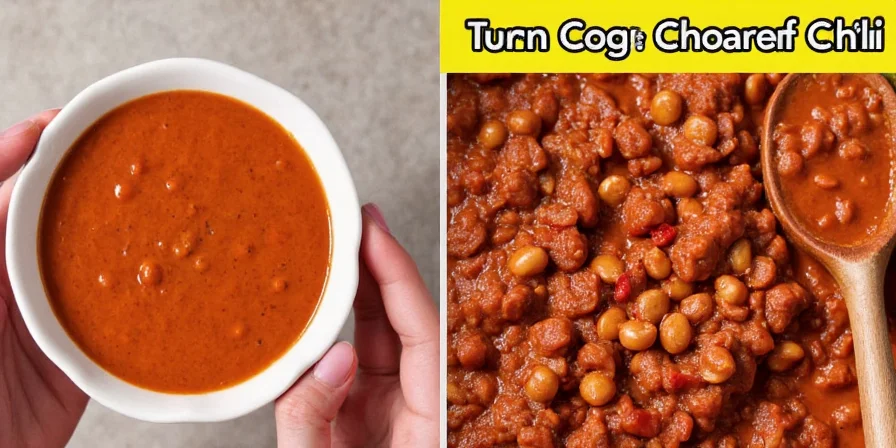
Dilution With Base Ingredients
The most flavor-preserving method: add more neutral ingredients to spread out the heat:
- Stir in cooked rice (1 cup per quart of chili)
- Add extra beans - black, kidney, or pinto all work well
- Incorporate additional tomatoes or broth to maintain consistency
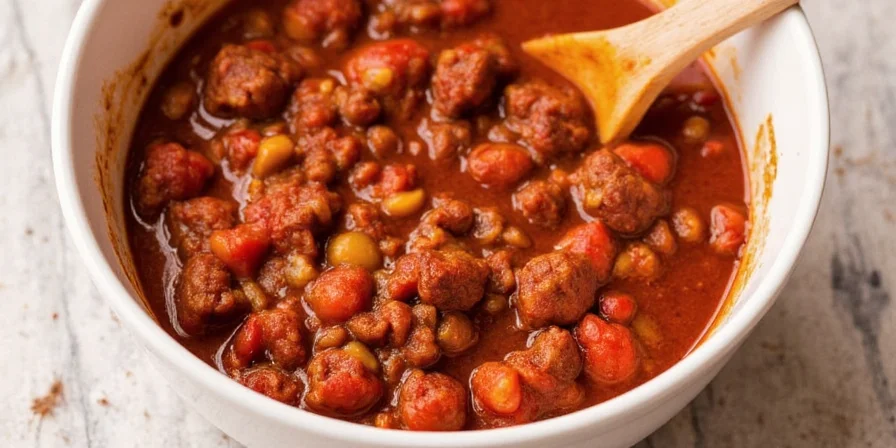
Fat-Based Heat Moderation
Fats absorb capsaicin and slow its release, giving your mouth breathing room:
- Swirl in 1-2 tablespoons butter or olive oil per quart
- Add peanut butter (1 tablespoon per quart) for Thai-inspired chilis
- Top servings with avocado slices for instant cooling
Acidity to Reset Your Palate
Sour elements temporarily alter capsaicin's binding efficiency:
- Squeeze fresh lime juice (1 tablespoon per quart)
- Add apple cider vinegar for tangy balance
- Use lemon zest in tomato-based recipes for subtle brightness

Extended Simmering Technique
For fresh pepper heat (not dried powders), longer cooking helps:
- Simmer uncovered for 30-60 minutes
- Stir occasionally to promote evaporation
- Add broth if consistency becomes too thick
Mellow Vegetable Integration
Bell peppers, carrots, or sweet potatoes absorb heat while adding nutrition:
- Finely chop and sauté before adding to chili
- Roast first for deeper flavor development
- Use pumpkin puree for earthy, subtle sweetness
Batch Swapping Method
For extreme over-spicing (ghost peppers, excessive cayenne):
- Save half the chili in a separate pot
- Cook a fresh mild batch without additional spices
- Mix together in 1:1 ratio to achieve desired heat level
Coconut Milk Cooling
Ideal for dairy-free solutions with superior capsaicin binding:
- Add 1 cup full-fat coconut milk per quart of chili
- Simmer 15-20 minutes for full flavor integration
- Garnish with cilantro for refreshing finish
Crunchy Texture Distraction
Physical barriers reduce direct contact with capsaicin:
- Add crushed tortilla chips to each serving
- Top with shredded cabbage or crunchy slaw
- Use plain crackers for immediate textural relief
| Over-Spicing Issue | Best Immediate Fix | Flavor Preservation |
|---|---|---|
| Too much chili powder | Dilution with base ingredients | ★★★★★ |
| Fresh peppers too hot | Extended simmering | ★★★★☆ |
| Accidental super-hot peppers | Batch swapping method | ★★★☆☆ |
Preventing Over-Spicing Before It Happens
Avoid the problem entirely with these practical tips from experienced cooks:
- Toasting dried spices first reduces their heat intensity
- Add powdered spices gradually during cooking (not all at once)
- Always taste after 10 minutes of simmering - heat develops over time
- Keep a small portion of mild chili separate as an emergency dilution reserve
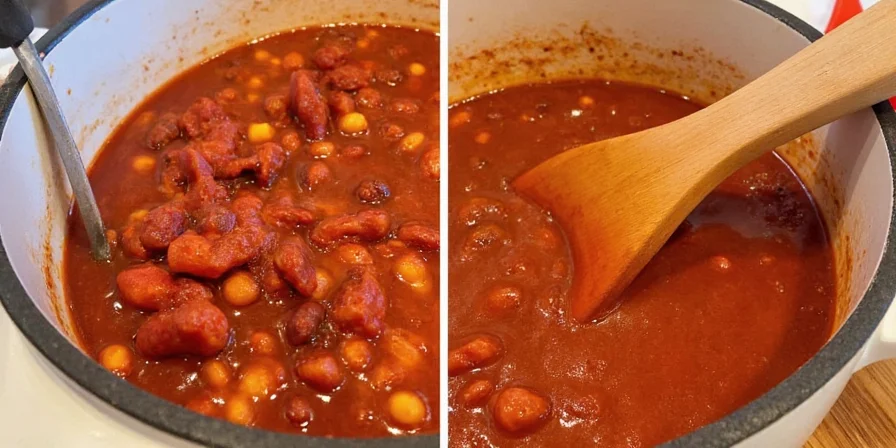
Frequently Asked Questions
How quickly do these methods work to reduce chili heat?
Most methods provide immediate relief when tasting, but for the entire dish, allow 10-15 minutes for ingredients to fully integrate. Dairy and fat-based solutions work within minutes, while dilution methods require thorough mixing and brief simmering to achieve uniform heat distribution.
Can I combine multiple methods for extremely spicy chili?
Yes, strategic combination often yields best results. Start with dilution (rice/beans), then add dairy for immediate receptor relief, followed by acidity to reset your palate. Avoid combining sugar with dairy as it can create curdling in some preparations.
Why does sugar help reduce perceived spiciness without affecting actual heat level?
Sugar triggers different taste receptors that compete with capsaicin signals in your brain. This neurological distraction doesn't reduce actual capsaicin concentration but changes how your brain processes the heat sensation, creating a perceived reduction in spiciness.
Which method preserves authentic chili flavor best while reducing heat?
Dilution with additional base ingredients maintains original flavor profile most effectively. Adding extra beans, tomatoes, or meat proportionally reduces heat while preserving the foundational taste elements. This approach works particularly well for traditional American-style chili recipes.
Can I prevent over-spicing before it happens?
Absolutely. Toast dried spices first to mellow their heat, add powdered spices gradually during cooking (not all at once), and always taste after 10 minutes of simmering since heat develops over time. Keep a small portion of mild chili separate as an emergency dilution reserve.
Now that you've rescued your chili, you're prepared for any spice mishap. Remember, the goal isn't eliminating spice but finding the perfect balance where everyone enjoys their meal. With these proven methods, you'll never have to throw away a pot of chili again.

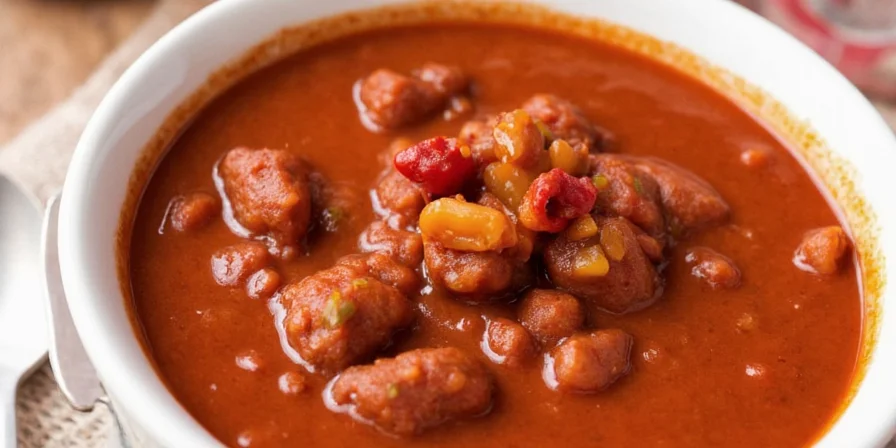









 浙公网安备
33010002000092号
浙公网安备
33010002000092号 浙B2-20120091-4
浙B2-20120091-4